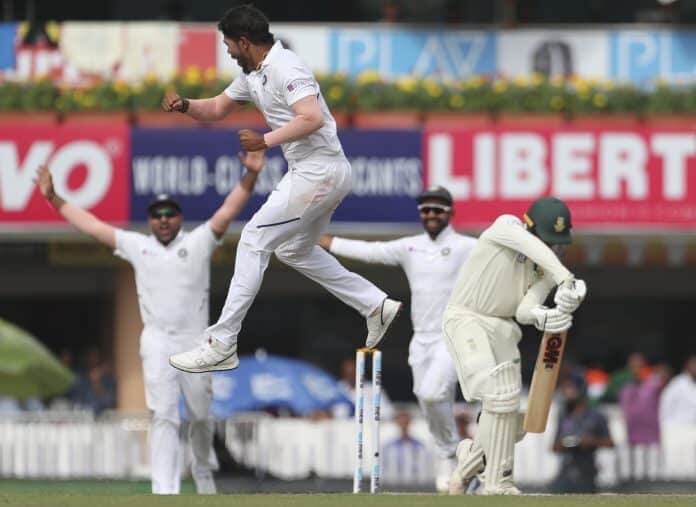Test tours of India have always been tough for visiting teams. The pitches, the crowds, the heat and even the food have been subject of both fear and scrutiny. The proof is in the pudding; with its 3-0 thrashing of South Africa last month, India completed its 11th consecutive Test series win at home, eclipsing Australia’s twin 10-series streaks between 1994 to 2001 and 2004 to 2008. Yet when South African captain Faf du Plessis remarked after the third Test, “This is a really tough Indian team under Virat Kohli”, there was a sense that Team India had now added a significant weapon to its growing arsenal at home: a sense of invincibility and ruthlessness that has typically underpinned the great Australian sides of eras gone by.

This edition of the Freedom Trophy was never likely to be a fair fight. Team India is at the peak of its powers, even without its injured spearhead Jasprit Bumrah. South Africa, on the other hand, are still grappling with the losses of AB de Villiers, Hashim Amla, Dale Steyn and Morne Morkel, amongst others. These are not players that can be replaced overnight. It was also very much expected that the Indian spinners would outperform South Africa’s spinners; Ashwin and Jadeja are two of the most successful bowlers at home in Test cricket history.
What was not expected was the sheer dominance of the Indian pace attack, both in terms of their success against the Proteas batsmen, but also in how substantially they out-bowled the South African quicks. India’s fast bowlers took 26 wickets at an average of 17, while South Africa’s, including the highly-regarded duo of Vernon Philander and Kagiso Rabada, managed just 10 wickets, at a staggering average of 70.2.

Kagiso Rabada 
Lungi Ngidi 
Vernon Philander
These deficiencies culminated in what is by some distance South Africa’s worst-ever series loss since its readmission to Test cricket in 1992. The second and third Tests in Pune and Ranchi also marked the first time South Africa lost consecutive Tests by an innings.
As is often the case in the stats-consumed world in which cricket fans live, the data here tells a story. While India has a formidable home record, it has rarely made life so formidably difficult for its opposition. There have certainly been days and matches etched into folklore; India’s first-ever Test win in Madras 1952, that Dravid and Laxman partnership in Kolkata 2001, and Tendulkar’s match-clinching ton in Chennai 2008, in the aftermath of the Mumbai attacks.
But India has rarely led opposition bowlers to remark, “I don’t know if we can be put under more pressure”, as Rabada lamented after the second Test in Pune, only for India to then pile on more pressure in Ranchi. It was as Kohli had promised: “No one is going to relax at any stage; we are going to go for a result in the third Test and hopefully make it 3-0, that’s a guarantee”.

The whitewash ultimately came through a near-perfect team performance by India, a critical trait of truly great teams. Bar Cheteshwar Pujara, who had a middling series, India’s batsmen were all in sublime form. The emergence of Rohit Sharma as a Test opener was particularly electric, with the Indian ODI vice-captain obliterating several records for six-hitting in Test cricket on his way to three centuries and a player of the series award. Kohli, too, notched up a personal best of 254*, and a series-topping average of 158.50. At the other end, the bowling unit hunted as a pack, unperturbed in the absence of Bumrah.
It is clear that Kohli’s fire runs deep within this Indian unit, who may have in eras gone by, taken the foot off the gas in the last Test of a concluded series. Some credit must go to the ICC’s Test Championship, which though imperfect, was devised to give Test matches more context and eliminate dead rubbers.
It has certainly motivated India, who sit atop the table with 240 points to their credit, well clear of New Zealand and Sri Lanka (each on 60 points). “The importance of every game has become that much more,” said Kohli. “In situations that, in a three-match series, you probably would have played out a draw, teams are going to go for wins (to) get those extra points, so I think it’s great for Test cricket. The matches are going to be that much more exciting, is what we feel, and we can already experience that”.
With barely a chink in its armour at home, this Indian side already appears destined for the World Test Championship final in June 2021. Under the no holds barred leadership of Kohli and the new BCCI President Sourav Ganguly, greatness lies around the corner – if India can but reproduce some of its scintillating home form when it is on the road.




